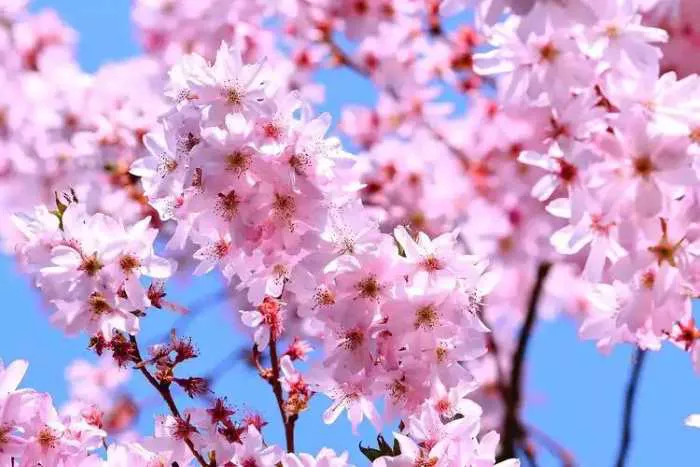May marks a vibrant transition in the gardening calendar. As spring fully unfolds, the risk of frost diminishes in many regions, creating an ideal time for planting a variety of flowers. This month offers gardeners the opportunity to enhance their landscapes with colorful blooms that will thrive throughout the summer. This article will explore the best flowers to plant in May, providing guidance on selection, planting techniques, and care requirements.
Understanding the Benefits of Planting in May
Planting flowers in May allows gardeners to take advantage of warmer temperatures and increased sunlight. Many flowers thrive in these conditions, leading to robust growth and abundant blooms. Additionally, planting in May gives flowers ample time to establish roots before the heat of summer sets in. This timing is crucial for ensuring that plants can withstand the hotter months ahead.
When choosing flowers to plant in May, consider your local climate, soil conditions, and the specific light requirements of each flower. It is also essential to think about the overall design and color scheme of your garden to create a cohesive and visually appealing landscape.
Annual Flowers for May Planting
Annual flowers are a popular choice for May planting because they provide vibrant color and can bloom all summer long. Here are some excellent options to consider.
Petunias: Petunias are versatile and come in a wide range of colors and patterns. They thrive in full sun and require well-drained soil. Regular deadheading will promote continuous blooming throughout the summer.
Marigolds: Marigolds are known for their bright orange and yellow flowers. They are easy to grow and can tolerate various soil conditions. Marigolds also deter pests, making them a beneficial addition to vegetable gardens.
Zinnias: Zinnias are cheerful flowers that bloom in various colors. They prefer full sun and well-drained soil. Regular watering and deadheading will encourage more blooms. Zinnias are also excellent for attracting butterflies to your garden.
Cosmos: Cosmos are tall, graceful flowers that produce delicate blooms in shades of pink, white, and purple. They thrive in full sun and are drought-tolerant once established. Cosmos are perfect for adding height and movement to garden beds.
Nasturtiums: Nasturtiums are unique flowers that come in vibrant colors and have edible leaves and flowers. They do well in poor soil and can tolerate some shade. Nasturtiums are also great for attracting beneficial insects.
Perennial Flowers for May Planting
Perennials are a fantastic investment for any garden, as they come back year after year. May is a suitable time to plant many perennial flowers. Here are some excellent choices.
Daylilies: Daylilies are hardy perennials that produce stunning blooms in various colors. They thrive in full sun to partial shade and can tolerate a range of soil types. Once established, daylilies require minimal care.
Echinacea (Coneflower): Echinacea is a drought-tolerant perennial known for its striking purple flowers. They thrive in full sun and attract pollinators. Echinacea is also valued for its medicinal properties.
Black-eyed Susans: These cheerful yellow flowers are easy to grow and thrive in full sun. Black-eyed Susans are drought-tolerant and attract butterflies. They are perfect for naturalizing in meadows or wildflower gardens.
Peonies: Peonies are beloved for their large, fragrant blooms. They prefer full sun and well-drained soil. Peonies can take a few years to establish but reward gardeners with stunning flowers for many years.
Salvia: Salvia is a versatile perennial that produces spikes of colorful flowers. They thrive in full sun and attract hummingbirds and butterflies. Salvia is drought-tolerant and can be used in various garden styles.
Tips for Planting Flowers in May
When planting flowers in May, follow these tips to ensure successful growth and vibrant blooms.
Soil Preparation: Before planting, prepare the soil by removing weeds, rocks, and debris. Loosen the soil with a garden fork or tiller to improve drainage and aeration. Adding organic matter, such as compost, can enhance soil fertility.
Planting Depth: Follow the recommended planting depth for each flower type. Generally, annuals should be planted at the same depth they were growing in their nursery containers, while perennials may require deeper planting.
Watering: After planting, water the flowers thoroughly to help establish their roots. Maintain consistent moisture, especially during the first few weeks. However, avoid overwatering, as this can lead to root rot.
Mulching: Applying a layer of mulch around the flowers can help retain moisture, suppress weeds, and regulate soil temperature. Use organic mulch, such as wood chips or straw, for added benefits.
Fertilization: Depending on the flower type, consider using a balanced fertilizer to promote healthy growth. Follow the manufacturer’s instructions for application rates and frequency.
Caring for Flowers After Planting
Once your flowers are planted, ongoing care is essential for their success. Here are key aspects to consider.
Watering: Regular watering is crucial, especially during dry spells. Water deeply to encourage deep root growth, but allow the soil to dry out slightly between waterings.
Deadheading: Removing spent flowers encourages new blooms and prolongs the flowering period. Regular deadheading keeps the plants looking tidy and promotes overall health.
Pest Management: Monitor your flowers for signs of pests, such as aphids or spider mites. Use organic pest control methods when necessary, such as insecticidal soap or neem oil, to protect your plants.
Pruning: Some flowers benefit from light pruning to encourage bushier growth. Remove any dead or yellowing leaves to improve air circulation and overall plant health.
Conclusion
May is an excellent month for planting a wide variety of flowers. Whether you choose annuals for immediate color or perennials for long-term beauty, the options are plentiful. By understanding the specific needs of each flower and providing proper care, you can create a vibrant and thriving garden. Enjoy the beauty and joy that flowers bring to your outdoor space as you plant and nurture them throughout the growing season.


